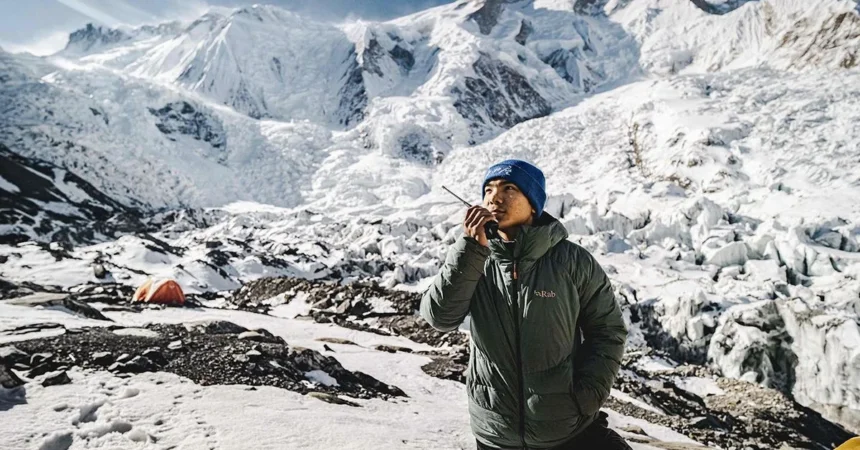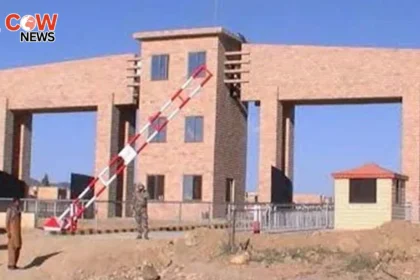The Young Nepali Who Made History: Conquering the 8,000-Meter Peaks
Nepal has long been home to some of the greatest mountaineers in the world, and now, a new name is etched into the history of high-altitude climbing. On October 9, 2024, a young Nepali climber became the youngest person ever to conquer all of the world’s 8,000-meter peaks, an achievement that has left the global mountaineering community in awe. This remarkable feat not only highlights the climber’s personal determination and skill but also underscores Nepal’s enduring legacy as the cradle of high-altitude climbing.
- The Young Nepali Who Made History: Conquering the 8,000-Meter Peaks
- The 8,000-Meter Peaks: A Mountaineer’s Ultimate Challenge
- A Record-Breaking Climb: The Journey
- Overcoming Life-Threatening Challenges
- The Historic Final Ascent
- Nepal’s Legacy in High-Altitude Climbing
- The Importance of Conservation and Responsible Climbing
- What’s Next for the Record-Breaking Nepali Climber?
The 8,000-Meter Peaks: A Mountaineer’s Ultimate Challenge
The world’s 14 peaks that soar above 8,000 meters are considered the ultimate challenge for mountaineers. These peaks are not just tall; they are deadly. Known for their extreme altitude, unpredictable weather conditions, and the infamous “death zone” where oxygen levels plummet, these mountains have claimed the lives of many experienced climbers. For anyone to summit all 14 of these peaks is considered one of the greatest achievements in the mountaineering world.
For the young Nepali climber, the journey to complete this formidable task was not only a test of physical endurance but also a mental battle. At such altitudes, every step is a challenge, and survival itself is a struggle. The climber’s ability to persevere in the face of such adversity makes his achievement even more remarkable.
A Record-Breaking Climb: The Journey
The young Nepali climber, whose identity is being celebrated across Nepal and the world, embarked on this ambitious journey several years ago. Like many of Nepal’s legendary Sherpas and mountaineers before him, he grew up in the shadow of the Himalayas, with dreams of scaling the world’s highest peaks. His inspiration came from Nepal’s rich mountaineering culture and the tales of those who had conquered the mountains before him.
His journey to the 8,000-meter summits began when he was just a teenager. His first major ascent was of Nepal’s most famous mountain, Mount Everest, the tallest peak in the world at 8,848 meters. For most mountaineers, reaching the summit of Everest is the pinnacle of their climbing careers, but for this young adventurer, it was only the beginning.After Everest, he set his sights on the remaining 13 peaks, each one presenting its own unique challenges. From the treacherous ridges of K2 in Pakistan to the frigid, windswept slopes of Kangchenjunga, the world’s third-highest peak, located on the border between Nepal and India, the climber faced a series of life-threatening challenges. His journey took him across Nepal, Pakistan, China, and India, where he battled high-altitude sickness, frostbite, avalanches, and brutal weather conditions.
Overcoming Life-Threatening Challenges
Scaling 8,000-meter peaks is not just about physical strength; it requires extraordinary mental toughness and precise preparation. The conditions at such high altitudes are unforgiving. The climber encountered multiple challenges throughout his expeditions:
- Altitude Sickness (Acute Mountain Sickness):
The body is not designed to operate in the “death zone,” typically above 8,000 meters, where oxygen levels are significantly lower. Even experienced climbers risk life-threatening altitude sickness, which can lead to confusion, headaches, and even pulmonary or cerebral edema. For the young climber, acclimatization was a critical part of his preparation for each peak. He had to spend weeks at base camps, allowing his body to adjust to the thin air before making his final summit pushes. - Harsh Weather Conditions:
The weather on 8,000-meter peaks is notoriously unpredictable. Sudden snowstorms, freezing temperatures, and high winds can turn an already dangerous climb into a deadly situation. The climber had to carefully plan his ascents, often waiting for weeks for a short window of good weather to make his summit attempts. Even then, conditions could change in an instant, forcing him to retreat or risk being caught in an avalanche or severe storm. - Exhaustion and Fatigue:
Climbing at high altitudes is physically exhausting. The young Nepali climber had to train rigorously for years to build the stamina required for such long, grueling expeditions. Carrying heavy loads of equipment, navigating steep, icy terrain, and enduring the biting cold took a toll on his body. Many climbers fail to summit these peaks because they run out of energy or make fatal mistakes in their exhausted state.
Navigating Technical Terrain:
Some of the 8,000-meter peaks, like K2 and Annapurna, are considered among the most dangerous mountains in the world due to their steep, technical terrain. The young climber needed to be an expert in a variety of climbing techniques, from ice climbing to rock scrambling, and had to use specialized equipment to ensure his safety. One misstep on these mountains can lead to a deadly fall.
The Historic Final Ascent
The final leg of the climber’s journey to conquer all 14 of the 8,000-meter peaks was arguably the most challenging. His last summit attempt was on Shishapangma, the smallest of the 8,000-meter peaks at 8,027 meters, located in Tibet. Despite its relatively lower height, Shishapangma is known for its tricky weather conditions and technical challenges.
After weeks of preparation and acclimatization, the climber made his final summit push in early October 2024. Battling fierce winds and freezing temperatures, he reached the summit, marking the culmination of years of hard work and perseverance. With this achievement, he secured his place in the record books as the youngest person to conquer all of the world’s 8,000-meter peaks.
Nepal’s Legacy in High-Altitude Climbing
This historic achievement adds to Nepal’s already rich legacy in high-altitude mountaineering. The country is home to eight of the world’s 14 highest peaks, including Mount Everest, and has produced some of the most renowned climbers in history. Nepalese Sherpas, in particular, have earned a reputation as some of the toughest and most skilled mountaineers in the world, often guiding international climbers to the summits of the world’s highest mountains.
Nepal’s significance in the mountaineering world was solidified when Tenzing Norgay, alongside Sir Edmund Hillary, became the first person to summit Mount Everest in 1953. Since then, countless Nepalese climbers have followed in his footsteps, pushing the boundaries of what is possible in high-altitude climbing.
For the young Nepali climber, his achievement is not just a personal victory but also a continuation of this proud tradition. His success will inspire a new generation of Nepali mountaineers to dream big and push their limits.
The Importance of Conservation and Responsible Climbing
While the young climber’s achievement is cause for celebration, it also brings attention to the growing need for conservation and responsible climbing in the Himalayas. As the number of climbers attempting to summit 8,000-meter peaks has increased in recent years, so too have the environmental and ethical challenges associated with high-altitude mountaineering.
Mount Everest, in particular, has been criticized for becoming overcrowded, with hundreds of climbers attempting to reach the summit each year. This has led to concerns about the environmental impact of so many climbers, including the accumulation of waste on the mountain. Additionally, the high demand for experienced guides has placed immense pressure on Nepal’s Sherpa community, many of whom risk their lives to help climbers reach the summit.
Efforts are being made to address these issues, with both the Nepalese government and international mountaineering organizations promoting responsible climbing practices. This includes stricter regulations on the number of climbers allowed on the mountains each season, better waste management systems, and increased support for local Sherpa communities.
What’s Next for the Record-Breaking Nepali Climber?
With all 14 of the 8,000-meter peaks now under his belt, the young Nepali climber has solidified his place in mountaineering history. But his journey is far from over. Like many great adventurers, he is already looking ahead to new challenges and adventures. Whether it’s setting new records, exploring uncharted territories, or using his platform to promote environmental conservation, there is no doubt that this young climber has a bright future ahead.
In the meantime, his achievement serves as a source of pride for Nepal and the global mountaineering community. It is a reminder of the incredible human spirit and the limitless potential of those who dare to dream big.
#NepaliClimber #8000MeterPeaks #Mountaineering #HighAltitudeClimbing #RecordBreaker #NepalMountains #Adventure #Himalayas #K2 #Everest #MountaineeringChallenges #Conservation #SherpaLegacy #YoungestClimber #ClimbingHistory #ExtremeClimbing







